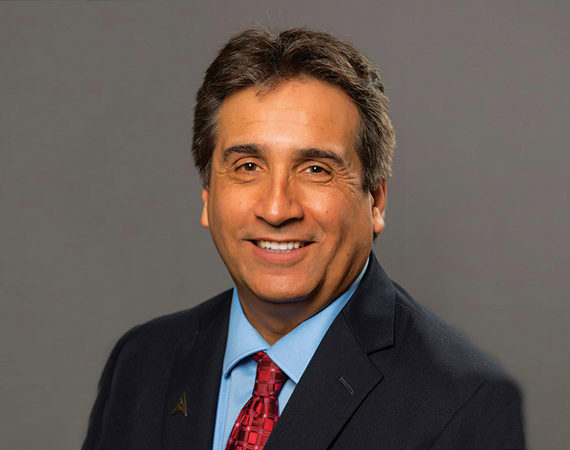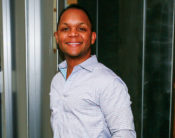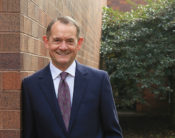In April 2019, Mike Seymour was named president of Alexandria Technical and Community College, a school with more than 4,000 students. Prior to Alexandria, he served as vice president of academic and student affairs at Lake Superior College in Duluth, where he led the college’s academic, enrollment, athletics, student service and workforce initiatives.
His resume includes senior-level experience at the University of Minnesota-Duluth and Anoka-Ramsey Community College. He has teaching experiences at St. Cloud State and Ferris State universities and as a faculty member at Riverland Community and Technical College. He serves as a peer reviewer for the Higher Learning Commission.
Seymour earned an undergraduate degree in television production and a master’s degree in career and technical education- human resources. He has a graduate certificate in management information systems and completed an educational doctoral program at the University of South Dakota.
What attracted you to Alexandria Technical and Community College?
Seymour: I wasn’t looking for a presidency, I was looking for the right fit. This college, with its legacy in technical education and its comprehensive mission, was just a really good fit. Plus, I’m a community-minded person, and having a standalone comprehensive college allows a president to invest heavily in the community. Some of the presidents today have multiple campuses in multiple communities, and they can get spread really thin; they can’t always give any one community as much of their time as they would like to.
All of that made Alexandria attractive to me.
How did you describe your vision as a college president during your interviews?
Seymour: Applying for these presidential positions is somewhat like running a political campaign. You come in with a platform based on your personal history and how the college has described its needs. My platform pretty much resembles how I grew up and where I’m from. I grew up in a trades family in the Upper Peninsula of Michigan. My dad and my dad’s brothers were carpenters, tinsmiths, and millwrights. We’re straight shooters up there. And I’m also an insider in Minnesota higher ed. I started my career at a technical college. I worked my way up through the ranks: from faculty to manager to a dean, and then to a vice president and now to a president. I guess I’ve touched all the bases. But my platform was also that I’m not a status quo person. Higher ed has gotten very competitive; we need to keep our institutions viable by innovating and by being more entrepreneurial.
Manufacturers all across Minnesota express concerns about the shortage of potential employees. How important is your role as an educator and a community leader to help manufacturers address their concerns about the shortage?
Seymour: One of our roles is to help ensure the vitality of the community in terms of its workforce. We’re part of an ecosystem that starts with changing perceptions about manufacturing-type work in high schools, or even as low as middle school. We need to convince parents and students that a two-year college education is a good bet economically, and that going to your local two-year college and learning a skill will pay dividends in the long haul. We also need to work with local employers to help create opportunities that will hold those students in our community once they graduate. All of this is to create a very positive image of the town, the college, and the community’s educational system to attract new families and new businesses. It’s all integrated, and no entity can work in isolation. Community support is deep on multiple fronts in Alexandria, but it seems like the local manufacturers are really supportive of the college and the manufacturing programs. They look to capture our graduates at every turn.
I think community leaders are seeing the sincerity about the way we’re trying to come up with innovative ways of attracting more people to our manufacturing programs. For example, we’re leveraging the workforce scholarships that were provided by the Legislature. Our local manufacturers have matched those scholarships, and we have bundled them with summer paid internships. It gives local businesses the opportunity to get some of this talent in their door early, which provides a higher potential of retaining those students after they graduate. We try to figure out how to implement any new strategy that has potential, and then measure whether or not it’s a successful endeavor. And if it is, we build on it. If it isn’t, we redirect.
Higher ed is changing. College presidents have to deal with more and more pressures that are outside of their control. What’s your level of optimism about the prospects for success in higher ed?
Seymour: I don’t think there is a one-size-fits-all answer. The fortunes of each school are based on a number of varying factors, community support being one of them. Some colleges have to deal with some legacy programming—it’s a little harder to be competitive if the industries are changing and you’re not able to reallocate from existing programs to create new ones. And then location is part of that mix. It’s much easier to draw to Alexandria than maybe some other parts of the state. And I think the challenge isn’t just at each college, but it’s at the system level, too. The idea is for the system to keep access points for all Minnesotans, based on the priorities of the Legislature and the governor. In the end, I really like our chances. I’m optimistic about our future.
…
Featured story in the Spring 2020 issue of Enterprise Minnesota magazine.


